Metabones Speed Booster ULTRA 0.71x M43 with Autofocus Press Release

(Download PDF version: Press Release here / Speed Booster ULTRA for M43 Whitepaper here)
Petersburg, VA, USA, July 24, 2015: Caldwell Photographic Inc. and Metabones® are pleased to announce a new Speed Booster ULTRA series of focal reducing adapters designed for Micro Four Thirds mirrorless cameras. Like the ULTRA series for Sony E-mount, the new Speed Booster ULTRA m43 uses an advanced 5-element 4-group optical design incorporating ultra-high index tantalum-based optical glass. However, the new design is specifically optimized for the Micro Four Thirds sensor and filter stack, and as a result achieves an astonishing level of performance that sets a new standard for focal reducers.
Like the revolutionary original Metabones Speed Booster® announced in January 2013, the Speed Booster ULTRA m43 has a magnification of 0.71x, and so it effectively reduces the crop factor of mirrorless Micro Four Thirds mount cameras from 2.0x to 1.4x. However, the new ULTRA design makes very effective use of exotic materials at the furthest limit of glassmaking technology, and as a result is almost perfectly corrected for use with all fullframe SLR lenses regardless of aperture. The Speed Booster ULTRA m43 will also work extremely well with many DX and APS-C format lenses provided the image circle of the lens is large enough. Optical performance of the new Speed Boosters is so good that the MTF of any lens attached to it will be improved. Even the latest generation of ultra-high performance SLR lenses such as the Zeiss Otus series can be improved by adding a Speed Booster ULTRA m43.
Figures 2 through 4 below show MTF at 10, 20, and 40 lp/mm as a function of image height for output apertures of f/0.9, f/1.0, and f/2.0, respectively1. At the maximum aperture of f/0.90 (i.e., with an f/1.2 master lens) the sharpness and contrast are extraordinary across the entire image circle. At just one-third stop down to f/1.0 the performance is equal to or better than the best photographic lenses used at their optimum apertures. An additional stop down to f/2.0 yields performance that is rarely encountered in photographic optics. In practice, what all of this means is that the new Speed Boosters will always enhance and never degrade the performance of the attached master lens.
And other aspects of optical performance haven’t been sacrificed in order to obtain high MTF, either. Figure 5 shows that there is less than 1 stop of corner illumination falloff even wide-open at f/0.9. There is no vignetting at all after the output aperture reaches f/2.82. Figure 6 shows that rectilinear distortion added by the Speed Booster ULTRA m43 is negligible at less than 0.7%. The charts shown in Figures 2 through 6 below show the optical performance of the Speed Booster ULTRA m43 when mounted behind an ideal “perfect” lens.
Like all Metabones Speed Boosters, the Speed Booster ULTRA m43 is optimized to correctly account for the camera’s filter stack located near the sensor surface3. This is especially critical at the extremely large apertures made possible by Speed Booster technology. As a result of this careful optimization, an enormous range of full-frame optics, ranging from vintage film lenses to the latest digital designs, will function flawlessly when adapted to Micro Four Thirds camera bodies.
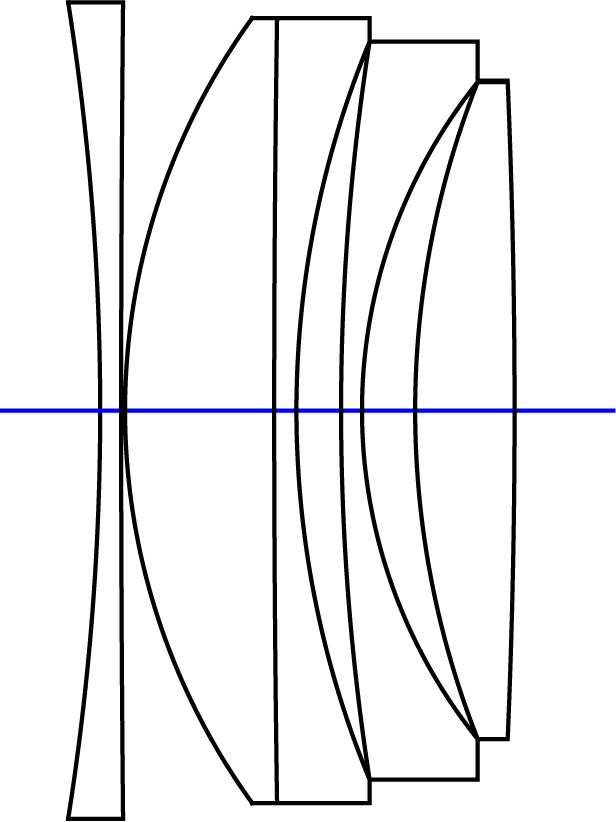 Figure 1: Speed Booster ULTRA m43 design layout |
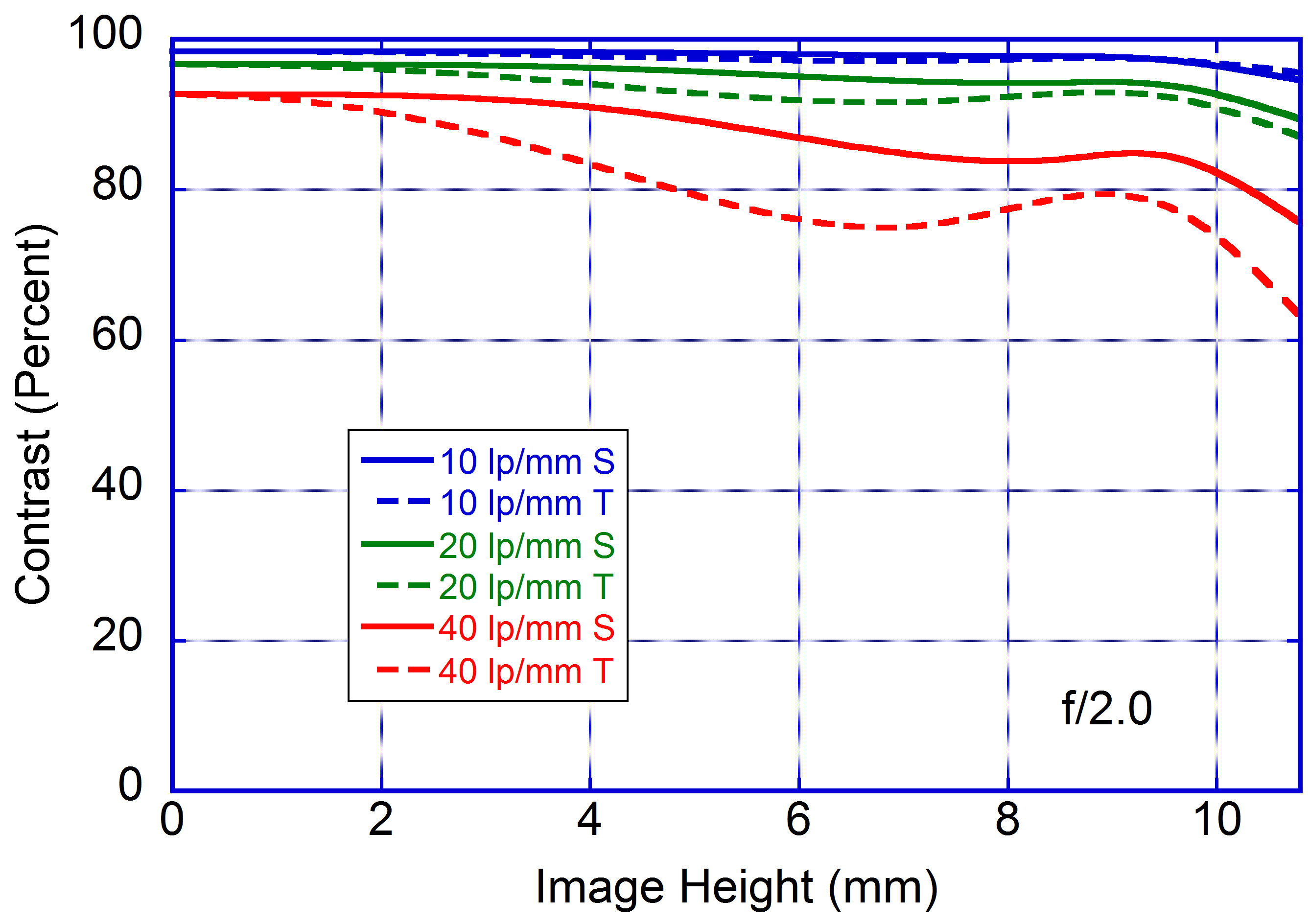 Figure 4: MTF at 10, 20, and 40 lp/mm for f/2 |
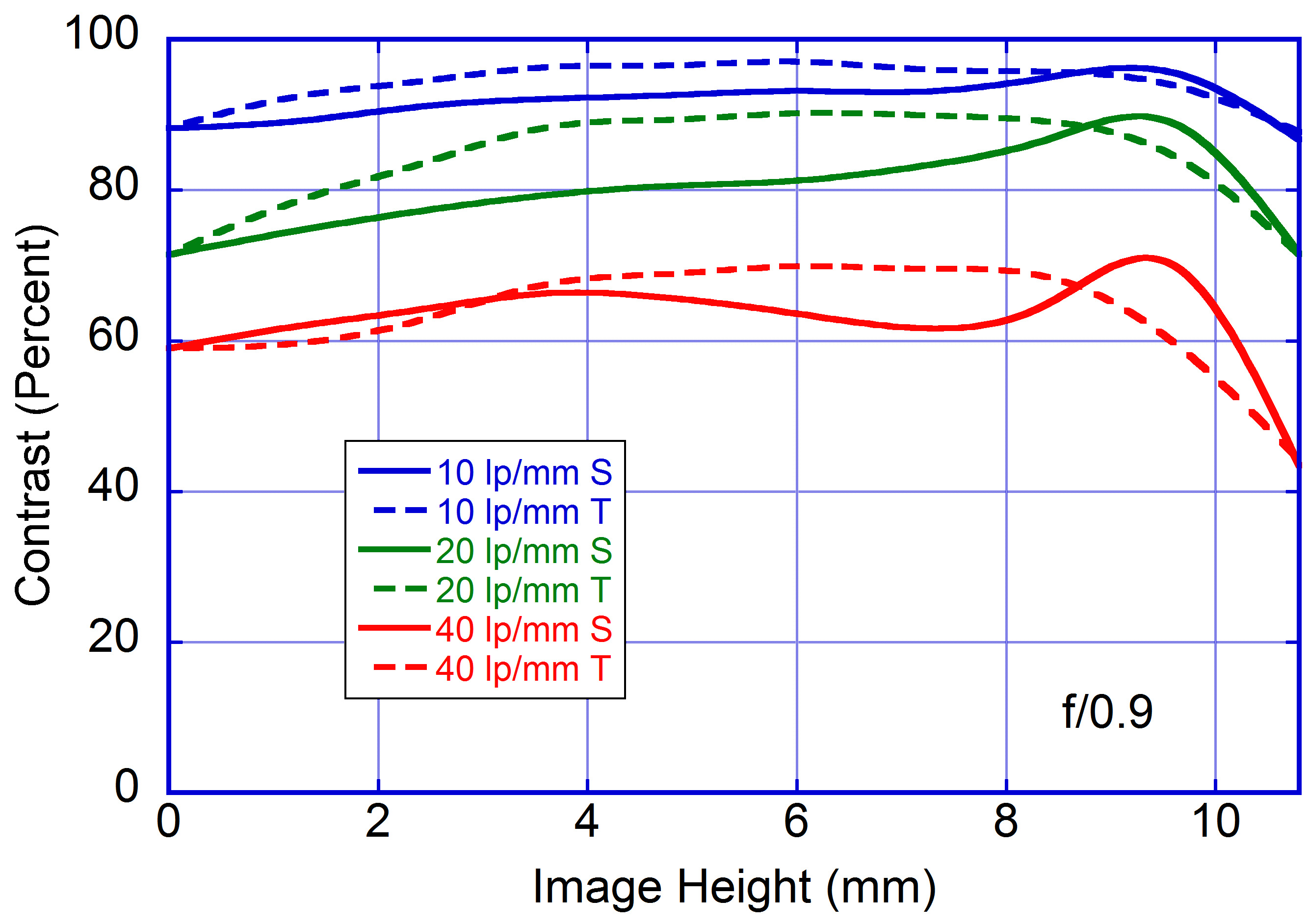 Figure 2: MTF at 10, 20, and 40 lp/mm for f/0.90 |
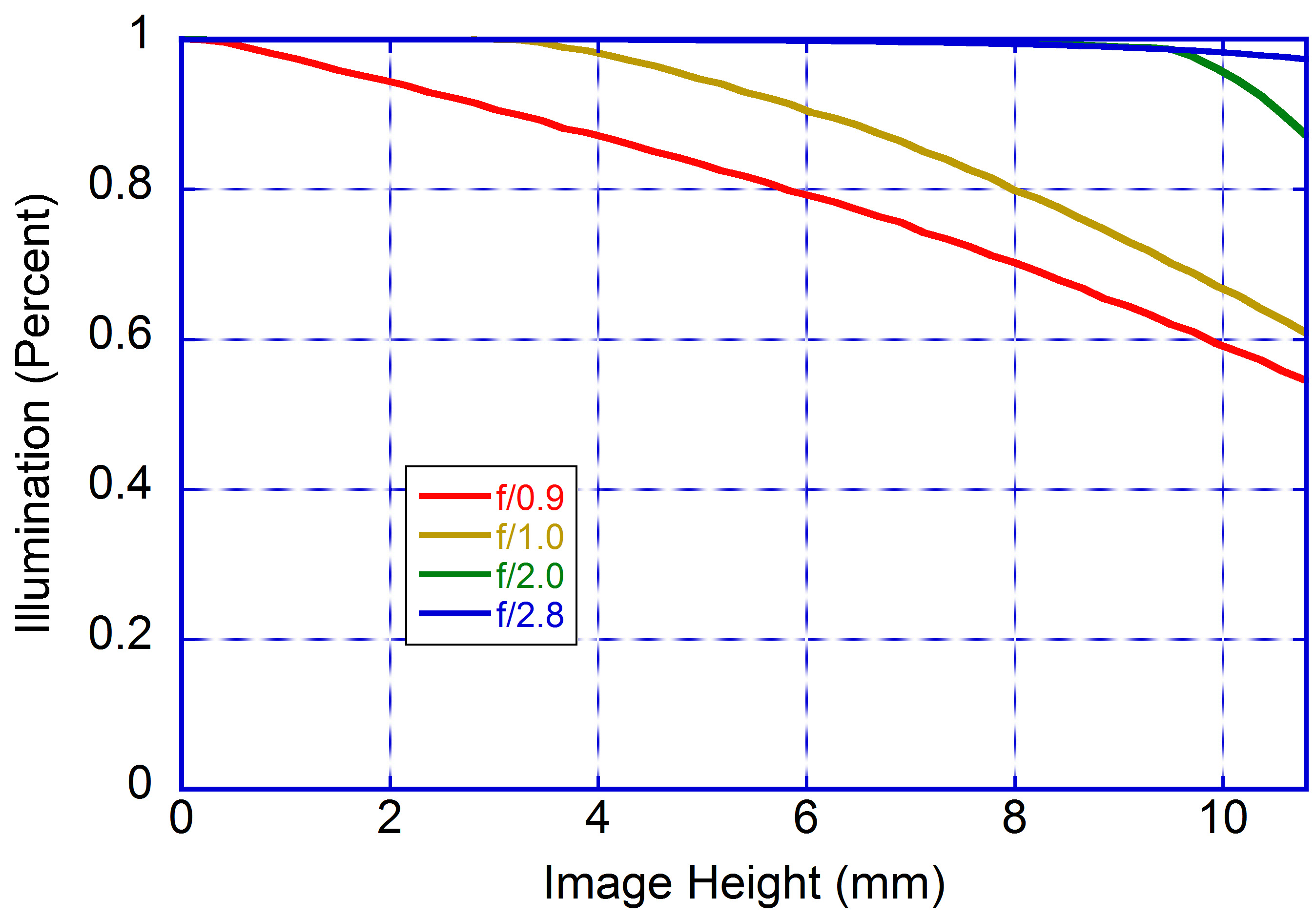 Figure 5: Relative illumination |
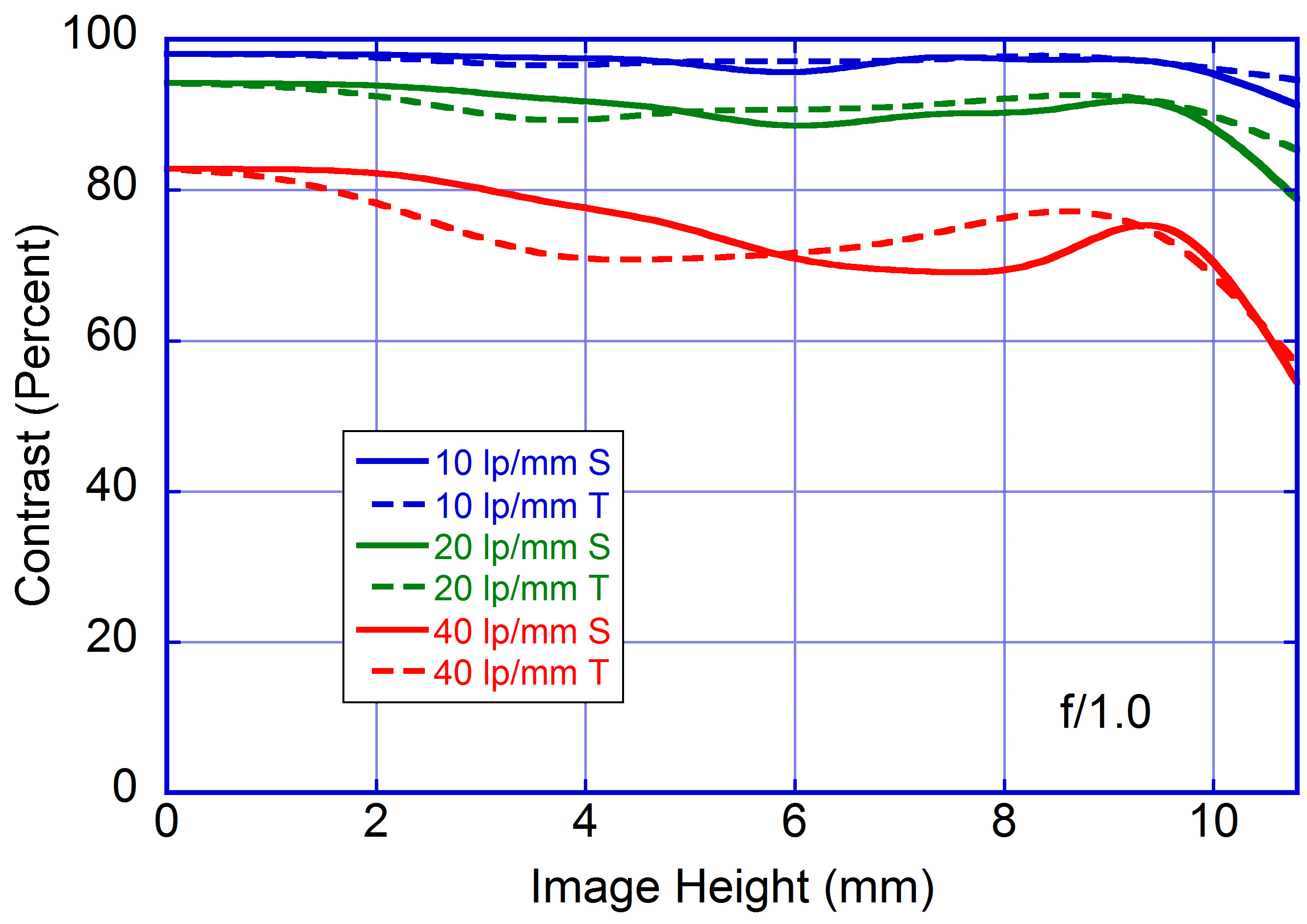 Figure 3: MTF at 10, 20 and 40 lp/mm for f/1.0 |
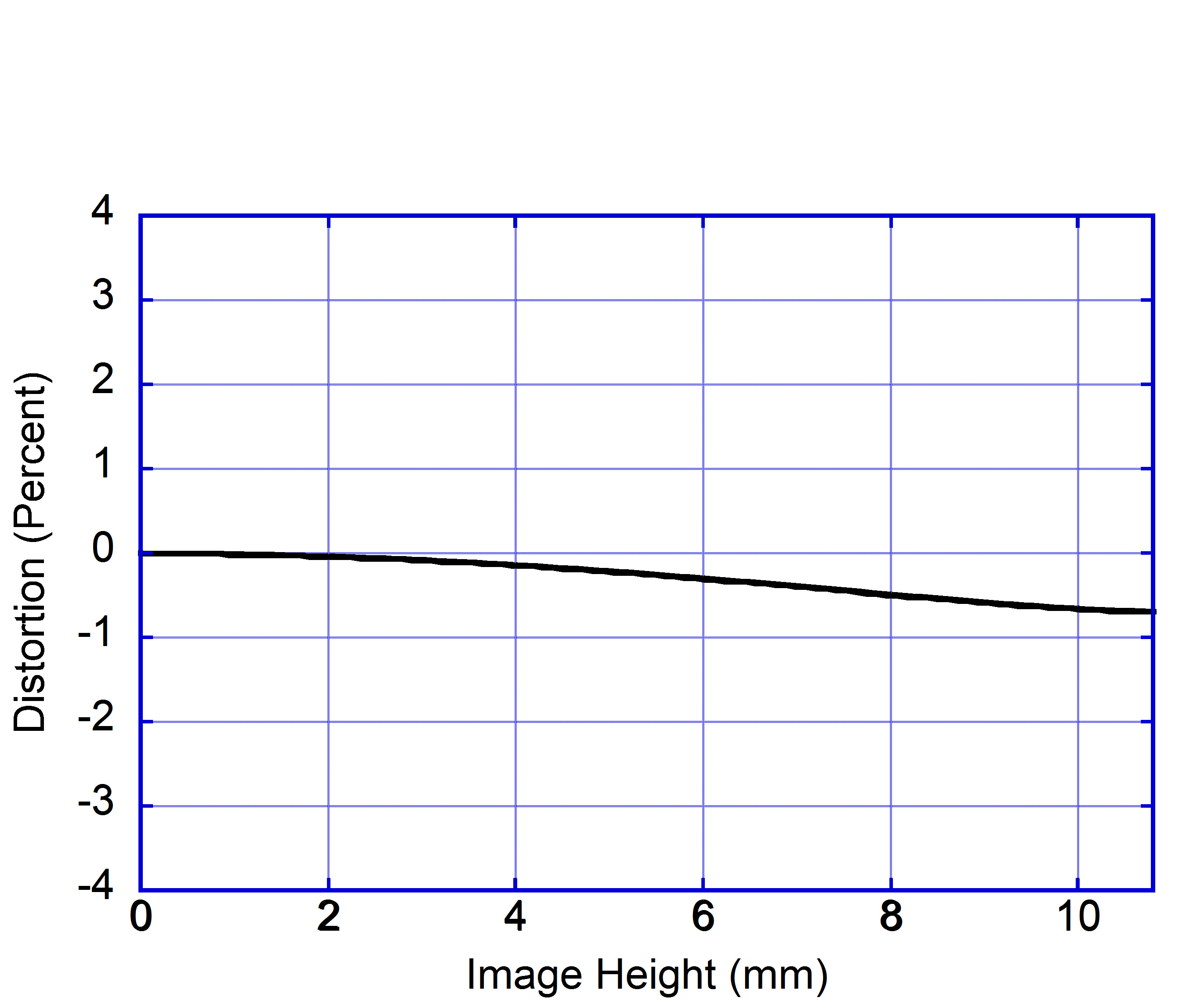 Figure 6: Distortion |
The Speed Booster ULTRA for Micro Four Thirds will be available starting in July 2015 from the Metabones website and its worldwide dealer network for US $649 (Canon EF mount) and US $479 (Nikon F/G mount), plus shipping and applicable taxes and duties. Additional lens mounts are being developed and will be released in the near future.
Autofocus with an Optimum Balance of Accuracy, Speed, Consistency and Reliability
New in Speed Booster ULTRA for Canon EF Mount to Micro Four Thirds is autofocus on Panasonic camera bodies, subject to certain limitations (see specifications for details). We are pleased to report that Panasonic Micro Four Thirds camera bodies are capable of autofocusing accurately even if the maximum aperture of the Speed Booster and the lens combined is in the sub-f/1.0 range. Although our first and foremost priority is accuracy, we are able to make great strides in autofocus speed as well, which is significantly faster than a DSLR Four Thirds lens on a Panasonic Micro Four Thirds camera (with adapter), or our E-mount offerings on Sony cameras prior to Alpha 7R II. For existing Metabones patrons with any previously released Canon EF to Micro Four Thirds mount Speed Boosters and Smart Adapters, a firmware update (Windows/Mac) to add autofocus is available for download on Metabones' web site.
Measured MTF Using a 55mm Zeiss Otus as the Master Lens:
The MTF curve in Figure 3 indicates that the Speed Booster ULTRA m43 has truly phenomenal performance at f/1.0, which is the output aperture you will get when the master lens is set to f/1.4. Extremely low levels of aberration in the Speed Booster ULTRA m43 combined with the aberration-reducing tendency inherent in focal reducers means that even extremely high performing lenses such as the renowned Zeiss Otus series can actually be improved! This is illustrated in the pair of measured MTF graphs below in Figure 7.

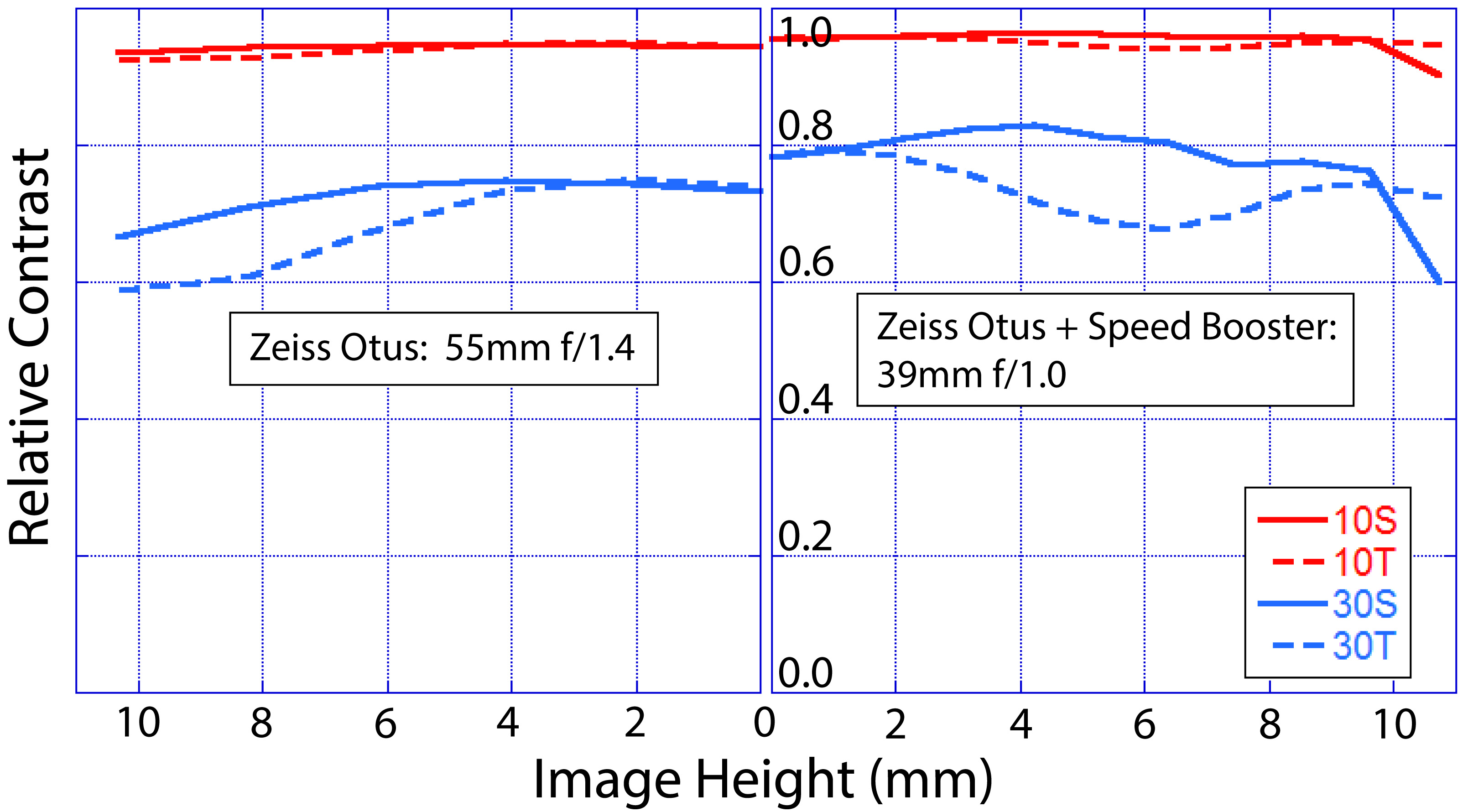
Figure 7: Measured MTF of a 55mm Zeiss Otus without (left) and with (right) Speed Booster ULTRA m43 at f/1.4 and f/1.0, respectively at 10 lp/mm and 30 lp/mm.
The 55mm f/1.4 Zeiss Otus is widely recognized as perhaps the finest large aperture photographic lens ever produced, and yet the Speed Booster ULTRA m43 transforms it into a 39mm f/1.0 lens with even higher MTF. In fact, the resulting combination is likely the highest-performing f/1.0-class photographic lens available to the public.
Metabones EF-M43 T Speed Booster ULTRA 0.71x Pictures:
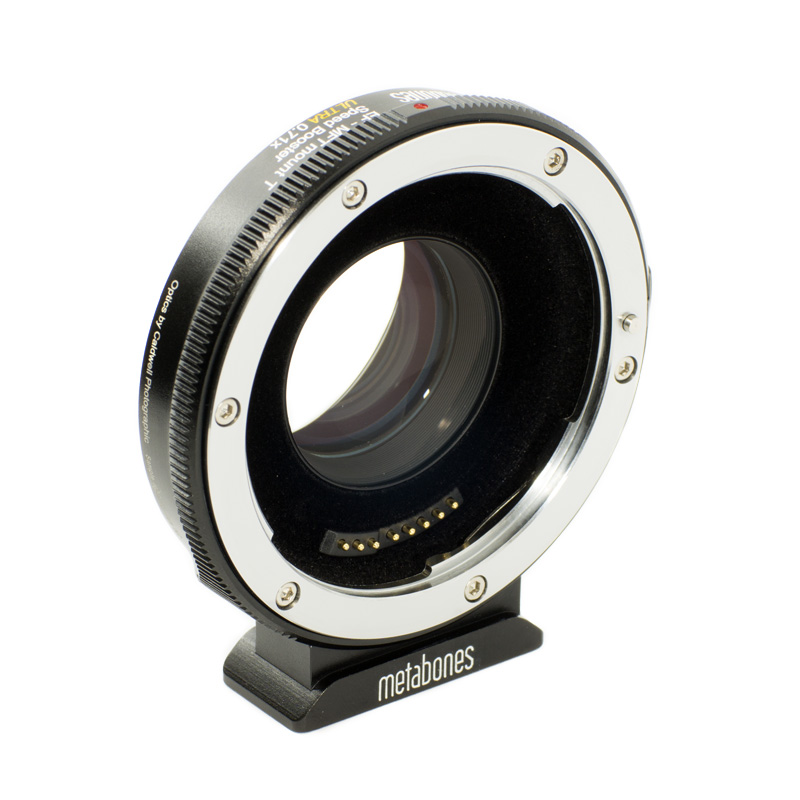
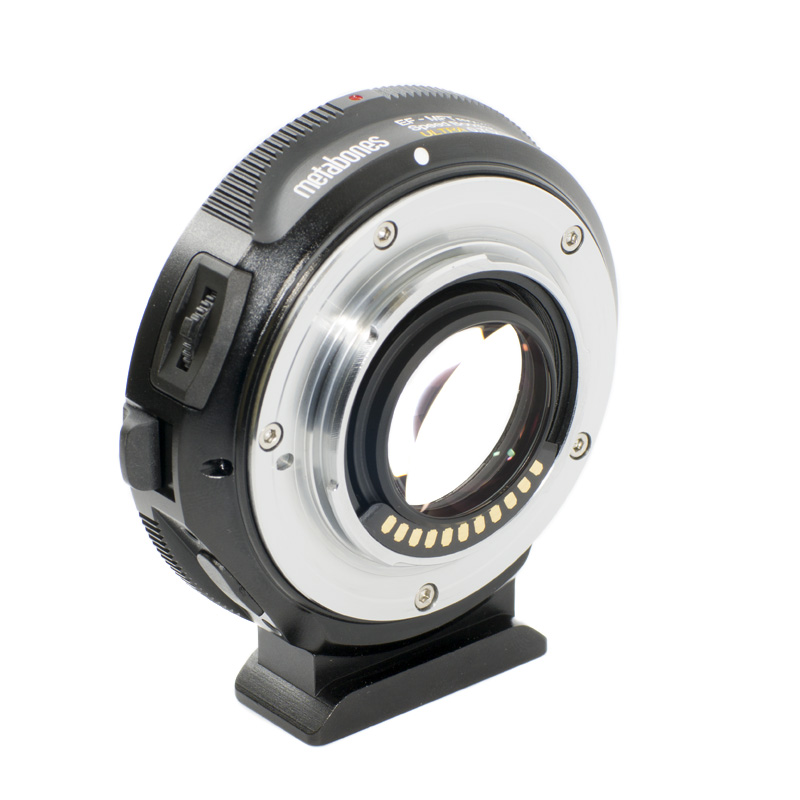
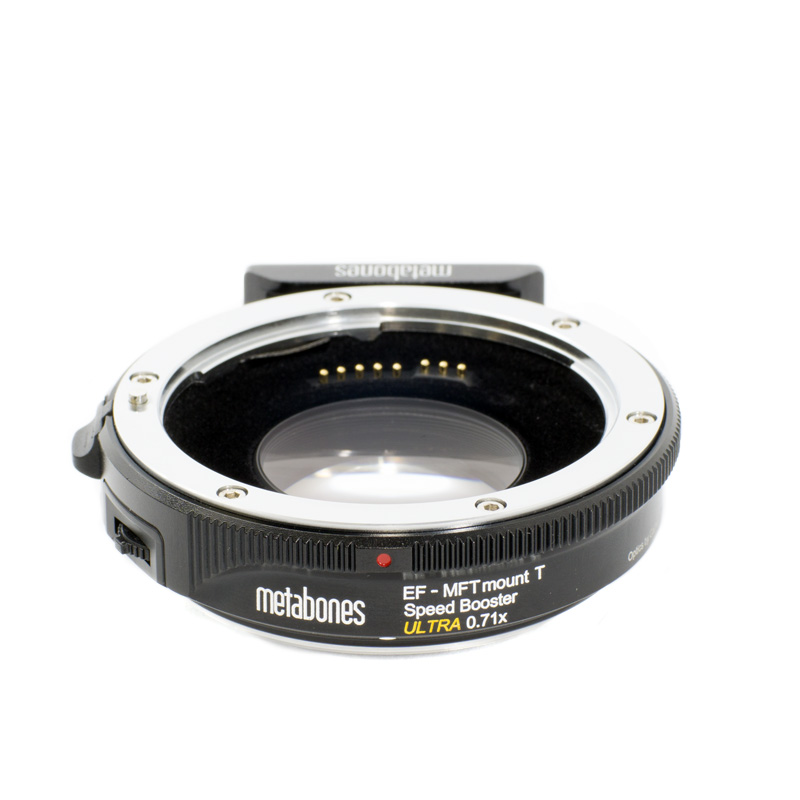
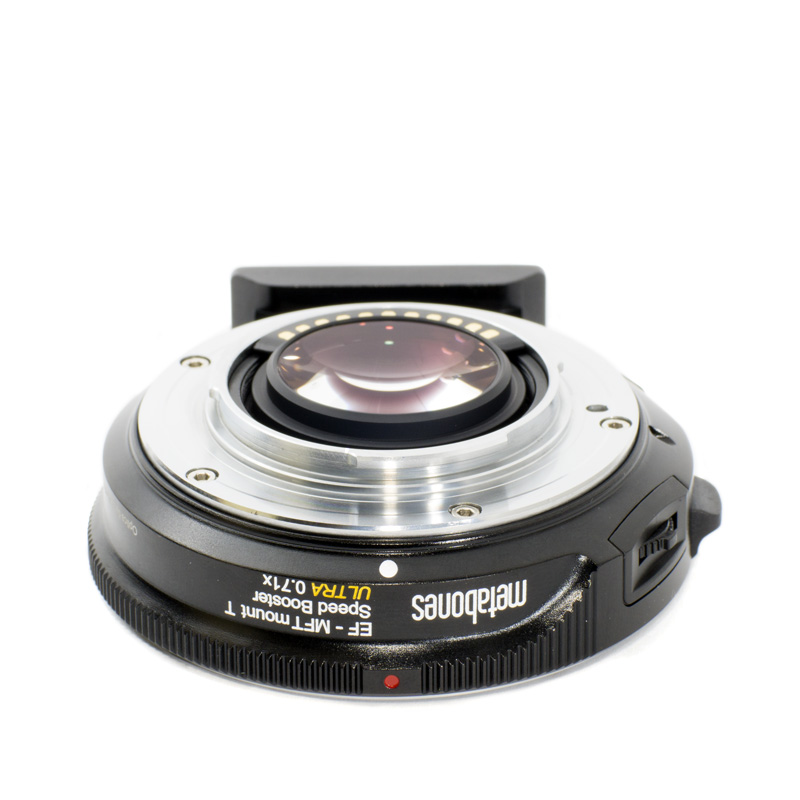
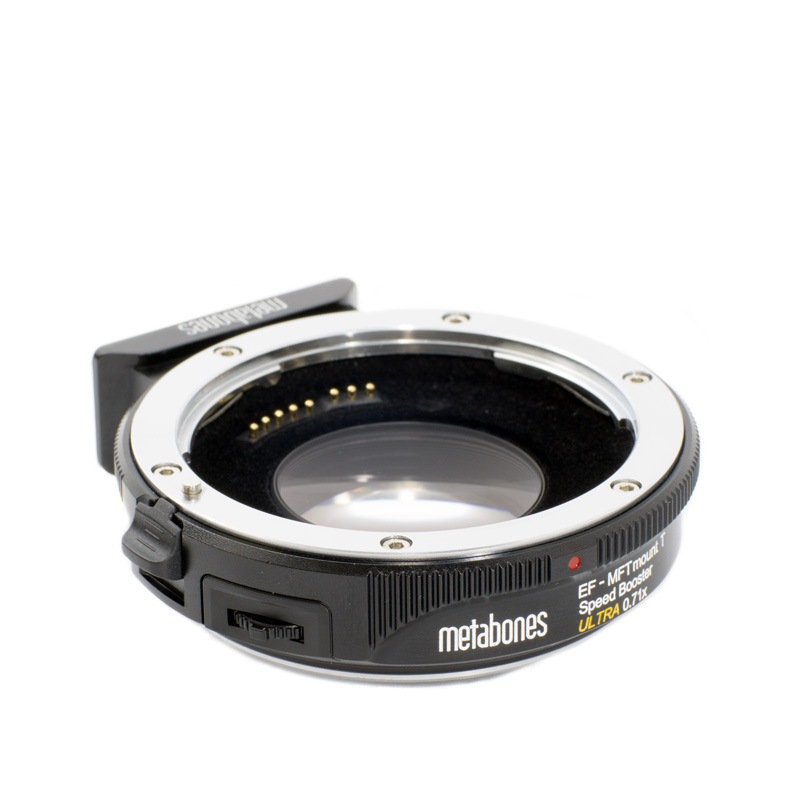
Metabones Speed Booster ULTRA m43 Specifications:
Model Code: MB_SPEF-m43-BT4 (Canon EF mount), MB_SPNFG-m43-BM3 (Nikon F/G mount)
Color: Black Satin exterior; Black Matte interior
Magnification: 0.71x
Crop Factor for Full Micro Four Thirds format: 1.42x
Crop Factor with GH4 in Cinema 4k (4096 x 2160) Video Mode: 1.66x
Maximum Output Aperture: f/0.90 (with f/1.2 lens attached)
Rectilinear Distortion: < 0.7%
Lens Elements/Groups: 5/4
Length Reduction: 5.5 mm
Camera Mount: Micro Four Thirds
Compatibility: All Micro Four Thirds cameras are supported
Image Format: 17.3 mm x 13.0 mm (full Micro Four Thirds format)
Lens Mounts: Canon EF and Nikon F/G at release; other mounts to follow in the near future
Lens Compatibility: Any full-frame (36 mm x 24 mm format) SLR lens with the appropriate mount can be used. DX format lenses can be mounted but may result in vignetting when the full Micro Four Thirds format is used, depending on the lens. DX lenses are fully supported when used on the Panasonic GH4 in Cinema 4k mode, and will function without abnormal vignetting. Canon EF-S lenses are not supported, but third-party EF-mount APS-C lenses can be mounted and will have full electronic functionality.
Autofocus supported for Canon EF version subject to the following known limitations:
- Contrast-detect autofocus support on Panasonic cameras only.
- AFC (continuous AF) and AFF (flexible AF) modes are not supported.
- Video AF may hunt more than a native lens.
- Autofocus is not supported with previous generation Tamron VC lenses and Contax N lenses modified to EF mount by Conurus Canada. (Newer Tamron lenses such as the 24-70/2.8 VC A007 and 70-200/2.8 VC A009 work fine.)
- Switching from manual focus or full-time manual focus (FTM) to autofocus may occasionally result in focus failing to lock or inaccurate focus. Activating autofocus for a second time will resolve this issue.
- AF accuracy is lens-dependent.
|
Accurate |
Inaccurate |
|
Canon EF20-35mm f/3.5-4.5 USM Canon EF24-105mm f/4L IS USM Canon EF35-80mm f/4-5.6 Canon EF40mm f/2.8 STM Canon EF50mm f/1.2L USM Canon EF50mm f/1.4 USM Canon EF70-200mm f/2.8L IS II USM Canon EF70-300mm f/4-5.6L IS USM Canon EF85mm f/1.2L II USM Canon EF100mm f/2.8 USM macro Sigma 18-35mm f/1.8 DC Art Sigma 18-125mm f/3.8-5.6 DC HSM Tamron SP 24-70mm f/2.8 Di VC USD A007 Tamron SP 70-200mm f/2.8 Di VC USD A009 Tokina AT-X PRO 11-16mm f/2.8 DXII |
Canon EF50mm f/1.8 II Canon EF200mm f/2.8L II USM Sigma 50mm f/1.4 EX HS
|
Special Features: Long-throw clickless aperture ring on Nikon F/G version; IS lens support, IBIS camera support, auto-exposure and in-camera aperture selection with Canon EF version.
Dimensions: 25 x 76 x 72mm for Canon EF version
Weight: 161 grams for Canon EF version
Tripod Mount: Robust removable type with Arca Swiss compatibility
Price: From USD $449 to $649 depending on lens mount.
Notes:
- MTF data is a full diffraction-based calculation that assumes the Speed Booster ULTRA m43 is attached to a perfect master lens having an exit pupil distance of 100mm. Note that the MTF calculations do not take into account sensor-induced apodization effects, sometimes called “pixel vignetting” or “pixel shading”, so actual results at large apertures are likely to be better than the calculations indicate.
- Illumination data assumes a perfect master lens with an exit pupil distance of 100mm and zero vignetting. The slight falloff shown at f/2.8 is due to cos4 effects alone, as the mechanical vignetting is zero. Actual results will depend on the exit pupil distance and vignetting characteristics of the master lens used.
- Standard Micro Four Thirds cameras have a total of approximately 4mm thickness of filter glass near the sensor, and the Speed Booster ULTRA m43 is designed to work optimally with this thickness of glass. The Blackmagic Cinema Camera and Pocket Cinema Camera have substantially thinner total filter glass thickness, which may cause noticeable aberrations when the Speed Booster ULTRA m43 is used on Blackmagic cameras at large apertures. For best results on Blackmagic cameras it is recommended that the appropriate Blackmagic-specific Speed Boosters be used.